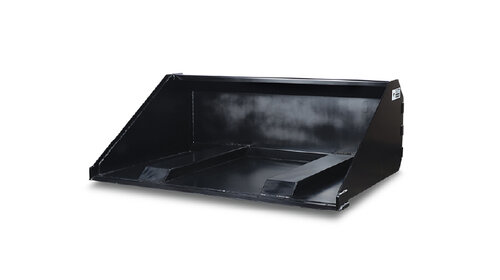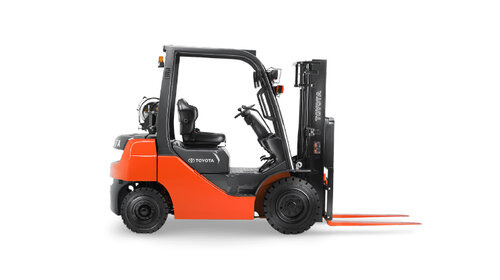8 Tips To Avoid Heavy Equipment Rollover Accidents
1. Read the Operator’s Manual
You didn’t learn to ride a bike without some coaching, so don’t take the controls of an earthmoving machine or aerial work platform without learning from an experienced operator. Certification is required — or highly recommended — to operate some equipment. Ask your instructor plenty of questions about scenarios you might encounter.What you forget to ask often can be found in the operator’s manual. Granted, operator’s manuals aren’t real page-turners, but they’re packed with valuable information that could keep you out of harm’s way.“The manufacturer is the one on the chopping block if something goes wrong, so they have thought of everything when it comes to maintenance and safe operation of that piece of equipment, and it is included in the operator’s manual,” Odom said. “What it can lift, what kind of grade it can handle, the safe angles of the machines — it’s all in there. You can never be 100% safe, but the way to be as safe as you can be is to be familiar with the operator’s manual.”
2. Lower Your Center of Gravity
While operating heavy equipment doesn’t require a PhD in physics, it is important to grasp one basic concept — center of gravity. Your machine’s center of gravity is the point where the weight is concentrated, and the lower and more centralized that point is, the more stable your machine. For example, when you raise the platform of a boom lift or the arm of an excavator away from the base, the machine’s center of gravity shifts upward and outward. The heavier the load that’s being lifted, the farther the center of gravity shifts. The steeper the incline your machine is on — you guessed it — the farther the center of gravity shifts.That’s why platforms and attachments should be lowered when moving machines, why you shouldn’t exceed your machine’s load capacity and why you never operate a machine on a steeper grade than specified in the operator’s manual.“If the center of gravity gets outside the base of the wheels or tracks, the machine is going to turn over,” Odom said. “Aerial equipment is a lot more susceptible to turning over because the center of gravity of a piece of aerial equipment is not fixed. If you have a bulldozer, it has a fixed center of gravity that will only change slightly if you move the blade up or down, but if you take an 80-foot boom lift, as it’s lifted to full capacity or rotated, the center of gravity is constantly moving, and that’s really where the center of gravity can get outside of the base.”
3. Match the Tool to the Task
Frugality and ingenuity are fine traits, but they can get you into trouble if you try to save money by renting equipment too small for your job or by using a machine for a job it wasn’t built to do.“I’ve seen a case where a person didn’t want to rent a forklift and a boom lift, so they tied the pipe to the boom and raised it up. That machine was not designed for that task, and you have a rollover,” Odom said. “So many times, an undersized, underpowered piece of equipment is the root cause of an accident. They’re trying to lift too much with a bucket or boom, and it turns over. ”If you have any questions about what equipment is best for your job, your local EquipmentShare branch has experts who can help you.
4. Walk Before You Roll
After you’ve picked the right equipment and learned to use it, take a few minutes to walk around the machine and make sure there aren’t any noticeable problems that could affect its performance.“Check all the fluid levels, tracks, buckets, booms, nuts and bolts, any loose or missing part, visible oil leaks,” Odom said. “Look at the condition of the tires, the condition of the U-joint, the main keen bolt that holds the basket on. The checklist I’m referring to is in the operator’s manual.”
5. Inspect the Terrain
The next step is a worksite assessment. Odom estimated that 70% of rollover accidents could be avoided by thoroughly inspecting the terrain you’re about to cover.“Walk around the jobsite where you’re going to be moving or operating equipment and look for things like drain covers that aren’t heavy enough to support heavy equipment, drop-offs, ditches, unlevel ground, ground that’s sandy or unsubstantial,” Odom said. “All of those contribute to equipment rolling over, because these machines can weigh 30,000 pounds or more. Once you’re in a piece of equipment, there are blind spots where you might not be able to see hazards, so the worksite assessment is one of the most important — if not the most important — tip.”
6. Buckle Up
The last item on the list before starting the engine is to fasten your seatbelt. A seatbelt might not prevent you from getting into a rollover accident, but it will help you survive one. A common thread in stories about fatal accidents is the operator either jumped from the machine or was thrown from it. Your best chance of surviving a rollover is to remain buckled in your seat.“If you look at warehouse forklifts, for example, most fatalities occur when people try to jump off. You usually end up with a crush injury,” Odom said. “If it turns over while you’re on it, you might break your arm or bang your head, but it’s probably not going to kill you.”
7. Use Spotters
One unavoidable risky task is getting heavy equipment on and off a trailer. It’s not a job for a novice. To minimize the risk, make sure to park on level ground, set the parking brake and chock the wheels to ensure the trailer is stable. Make sure the trailer and ramp are dry so the machine’s tracks or wheels don’t slip.Most importantly, don’t load or unload by yourself, because it can be hard to tell if your wheels or tracks are dangerously close to the edge of the trailer.“There’s blind spots on every machine, so you need to use one and preferably two spotters,” Odom said.
8. Adjust to the Weather
Another risk is bad weather. For example, aerial work platforms should not be used in high winds — the exact wind speed limits can be found in your operator’s manual. For some jobs, such as plowing snow, the bad weather is the whole reason you’re operating the machine in the first place. Poor visibility and slick surfaces make it hard to stay on the road, and deep snow makes it difficult to know where a road stops and a ditch begins. If possible, familiarize yourself with your route before the storm and mark potential hazards. Slow down, don’t plow beyond the edge of a paved surface and don’t get out of the vehicle until you’re parked on level ground.
EquipmentShare is a People First company that takes safety seriously, and we want you to be safe when operating machinery.

.svg)
.svg)














